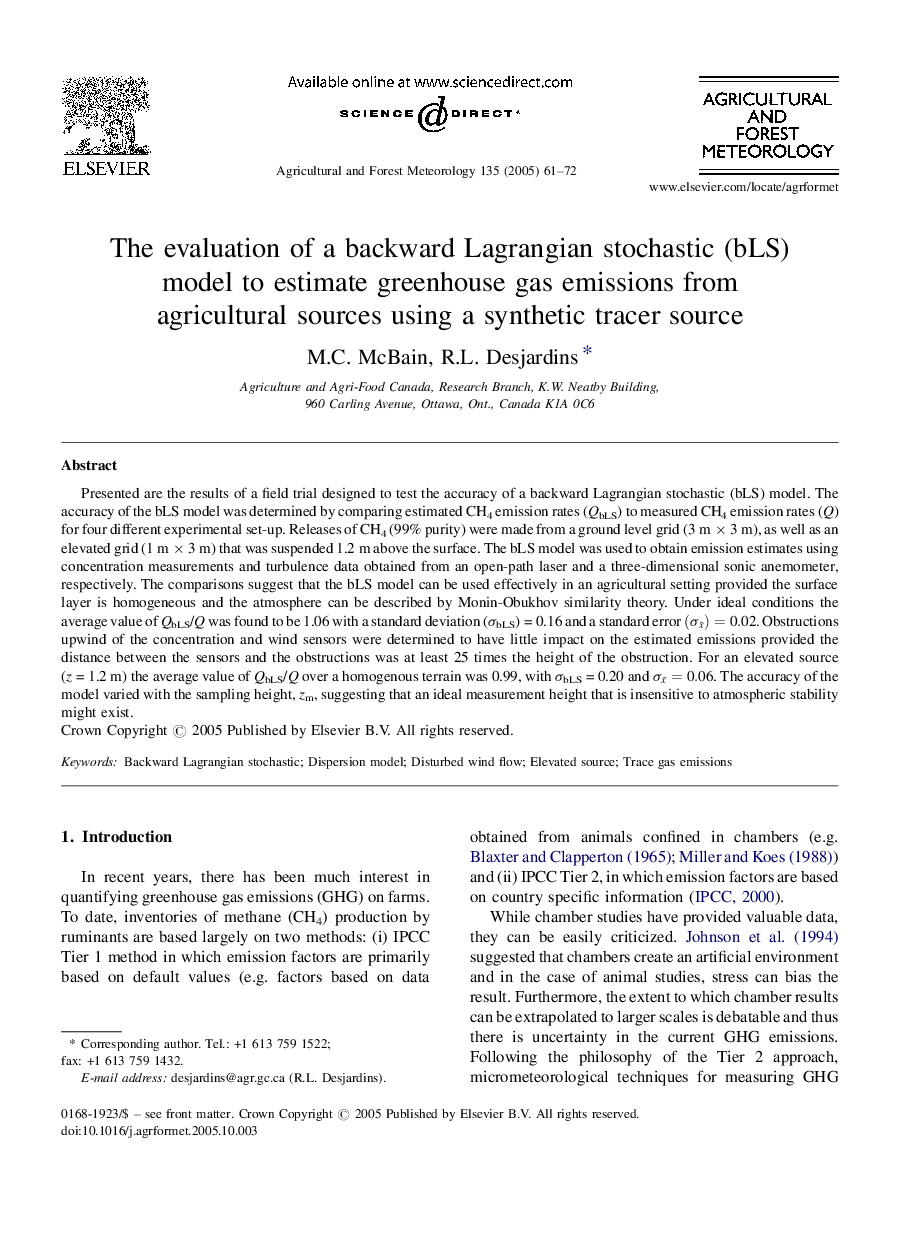| Article ID | Journal | Published Year | Pages | File Type |
|---|---|---|---|---|
| 9619375 | Agricultural and Forest Meteorology | 2005 | 12 Pages |
Abstract
Presented are the results of a field trial designed to test the accuracy of a backward Lagrangian stochastic (bLS) model. The accuracy of the bLS model was determined by comparing estimated CH4 emission rates (QbLS) to measured CH4 emission rates (Q) for four different experimental set-up. Releases of CH4 (99% purity) were made from a ground level grid (3 m Ã 3 m), as well as an elevated grid (1 m Ã 3 m) that was suspended 1.2 m above the surface. The bLS model was used to obtain emission estimates using concentration measurements and turbulence data obtained from an open-path laser and a three-dimensional sonic anemometer, respectively. The comparisons suggest that the bLS model can be used effectively in an agricultural setting provided the surface layer is homogeneous and the atmosphere can be described by Monin-Obukhov similarity theory. Under ideal conditions the average value of QbLS/Q was found to be 1.06 with a standard deviation (ÏbLS) = 0.16 and a standard error (Ïx¯)=0.02. Obstructions upwind of the concentration and wind sensors were determined to have little impact on the estimated emissions provided the distance between the sensors and the obstructions was at least 25 times the height of the obstruction. For an elevated source (z = 1.2 m) the average value of QbLS/Q over a homogenous terrain was 0.99, with ÏbLS = 0.20 and Ïx¯=0.06. The accuracy of the model varied with the sampling height, zm, suggesting that an ideal measurement height that is insensitive to atmospheric stability might exist.
Related Topics
Physical Sciences and Engineering
Earth and Planetary Sciences
Atmospheric Science
Authors
M.C. McBain, R.L. Desjardins,
